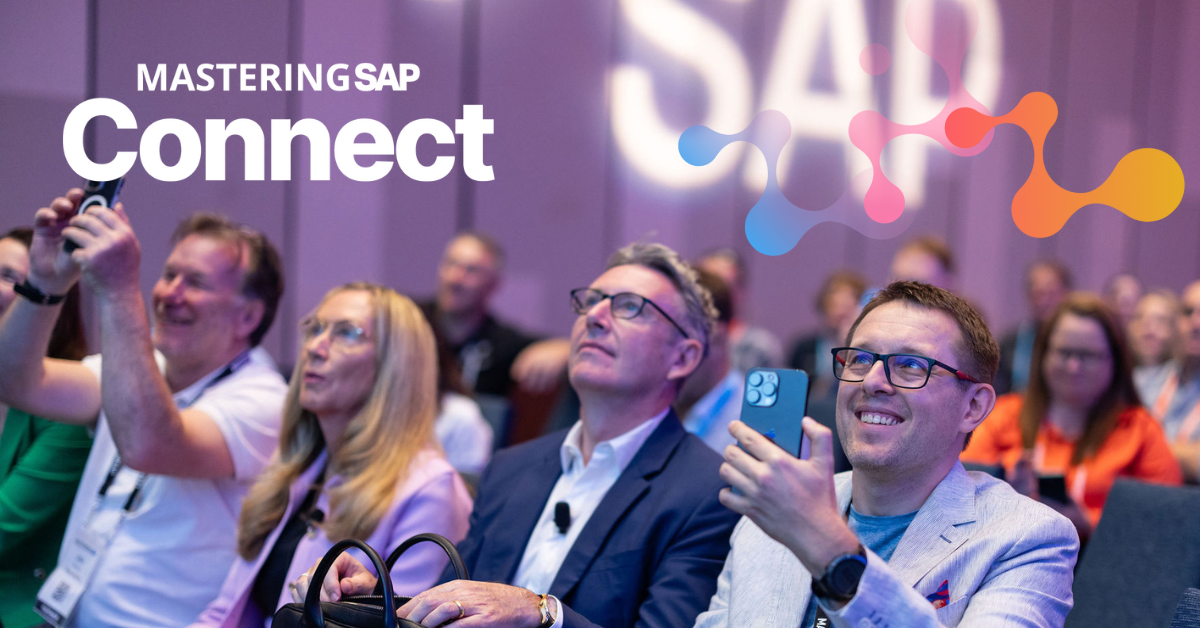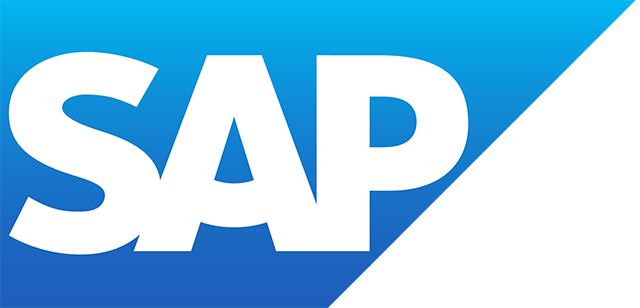SAP Release Management
Filter By
Browse By
- SAP Analytics and AI
- SAP Application Development and Integration
- All SAP Application Development and Integration
- SAP ABAP
- SAP ABAP Development Tools
- SAP ABAP Test Cockpit
- SAP API Management
- SAP BAPI
- SAP Basis
- SAP BRF
- SAP Business Application Studio
- SAP CMS
- SAP Design Studio
- SAP Development Tools
- SAP DevOps
- SAP EAI
- SAP EDI
- SAP Extension Suite
- SAP Fiori
- SAP Fiori Elements
- SAP Integration Suite
- SAP Low Code Application Development
- SAP Low Code Automation
- SAP Netweaver
- SAP Release Management
- SAP UI5
- SAP Web Application Server
- SAP Web IDE
- SAP Business Process Management
- SAP Center of Excellence
- SAP CIO
- SAP Customer Experience
- SAP Data and Data Management
- All SAP Data and Data Management
- SAP BW
- SAP BW/4HANA
- SAP Crystal Reports
- SAP Data Archiving
- SAP Data Center
- SAP Data Governance
- SAP Data Integration
- SAP Data Migration
- SAP Data Quality
- SAP Data Services
- SAP Data Strategy
- SAP Data Visualization
- SAP Data Warehouse Cloud
- SAP DMS
- SAP Document Control
- SAP EIM
- SAP ETL
- SAP ETL Tools
- SAP HANA
- SAP HANA Administration
- SAP HANA Deployment Infrastructure
- SAP HANA Studio
- SAP Master Data
- SAP Master Data Governance
- SAP MDM
- SAP Enterprise Architect
- SAP Enterprise Asset Management
- SAP ERP
- SAP Finance
- All SAP Finance
- SAP Accounting
- SAP AR AP
- SAP Asset Accounting
- SAP Billing Systems
- SAP BPC
- SAP BRIM
- SAP Cash Management
- SAP Central Finance
- SAP Controlling
- SAP COPA
- SAP Cost Center Accounting
- SAP Currency Risk
- SAP e-invoicing
- SAP FICO
- SAP Finance Automation
- SAP Advanced Financial Closing
- SAP Financial Consolidation
- SAP Financial Planning
- SAP FX Risk
- SAP General Ledger
- SAP Global Tax Management
- SAP Hyperion
- SAP Order to Cash
- SAP Payment Processing
- SAP Profitability Analysis
- SAP Rebate Management
- SAP S/4HANA Finance
- SAP SWIFT Compliance
- SAP Treasury Management
- SAP Universal Journal
- SAP Governance Risk and Compliance
- SAP Human Capital Management
- SAP Intelligent Technologies
- SAP Platform and Technology
- All SAP Platform and Technology
- SAP Business Technology Platform
- SAP Cloud
- SAP Cloud Connector
- SAP Cloud Integration Platform
- SAP Cloud Migration
- SAP Cloud Platform
- SAP Cloud Providers
- SAP Cloud Strategy
- SAP Digital Signature
- SAP Container Platform
- SAP HANA Enterprise Cloud
- SAP Digital Asset Management
- SAP Smart Forms
- SAP HEC
- SAP Digital Integration Hub
- SAP Hyperscalers
- SAP Infrastructure
- SAP Messaging
- SAP Quality and Testing
- SAP Security
- SAP Spend Management
- SAP Supply Chain Management
- All SAP Supply Chain Management
- SAP APO
- SAP Asset Management
- SAP Business Network
- SAP Digital Manufacturing Cloud
- SAP Digital Twin
- SAP EWM
- SAP IBP
- SAP Inventory Management
- SAP Label Printing
- SAP Logistics
- SAP Manufacturing
- SAP Manufacturing Automation
- SAP MES
- SAP MII
- SAP MM
- SAP MRO
- SAP MRP
- SAP Order Management
- SAP Plant Maintenance
- SAP PLM
- SAP Production Planning
- SAP S&OP
- SAP SD
- SAP SPM
- SAP Supply Chain Planning
- SAP Track and Trace
- SAP Transportation Management
- SAP System Administration
SAP Release Management
The demand for rapid innovation to support digital transformation has increased across all organizations. Non-SAP applications, especially those in the cloud, are often deployed within months. In an SAPinsider survey, Change Management and Testing in SAP, 40% of respondents said their goal was rapid deployment of updates and upgrades with 61% wanting to reduce business risk and 42% wanting negligible disruption.
SAP Release Management
The demand for rapid innovation to support digital transformation has increased across all organizations. Non-SAP applications, especially those in the cloud, are often deployed within months. In an SAPinsider survey, Change Management and Testing in SAP, 40% of respondents said their goal was rapid deployment of updates and upgrades with 61% wanting to reduce business risk and 42% wanting negligible disruption.
Release management becomes critical in such scenarios. Release management is the process of managing, planning, scheduling, and controlling a software build through testing and deployment in the production environment. The end goal is successful deployment of all planned changes into the production environment.
Like a well-orchestrated supply chain, release management ensures the rollout of series of changes (called release cycles) to achieve the product rollout. There can be major releases which are long projects taking from 1-3 years and minor releases which may take days or weeks.
SAP provides release management capabilities to plan and execute change execution. Some of the benefits of the capabilities are:
- Reduced risk through extensive testing
- Less business risk
- Better test system environment through better planning
- Increased productivity due to standardization, schedules and roles
- Better planning and tracking of implementation activities.
The release process involves several stages of the release cycle.
- Scoping — documenting the requirements and developing the IT requirements.
- Building — developing the software changes for a certain release cycle.
- Testing — testing the changes through various tests such as user acceptance, regression, and integration testing.
- Deploying — implements the technical cutover of the release by importing all transports into production, which is managed using SAP Solution Manager.
System integrators and consultants include Cognizant, Microexcel, TechMahindra.
SAP Solution Manager has long been used to plan, create packages for deployment, and assign requirements and changes to a release. SAP ChaRM is an SAP Solution Manager tool to manage processes that occur in a transition from concept to testing, until final advertising and production. We can track changes and transport requests for change management systems throughout the entire business system. SAP Solution Manager Project will keep track of which requests for transport are linked to which projects and in what order they have for import.
Many specialized vendors have rolled out innovative products to manage change such as Panaya, Rev-Trac, and ServiceNow. As more and more customers move to a continuous integration/continuous deployment (CI/CD) or agile/DevOps approaches, there is significant effort to plan and track all the changes. Strong collaboration, planning, and automation of processes — including testing and rollover — are required.
Read this case study to learn how a Government Organization Improved Its ChaRM Release Strategy and Release Management Process.
424 results
-

 Premium
Premium
Two SAP-Enabled R2P Process Controls for Sarbanes-Oxley Compliance
Reading time: 9 mins
Requisition-to-pay (R2P) is a key operational process that auditors for Sarbanes-Oxley Act compliance will expect to see controls. Fortunately, R/3 Materials Management (MM) has a number of configuration controls that you can use for this purpose. The author explains two, recording purchase requisitions and releasing purchase requisitions, and shows how you might use them in...…
-

- SAP Change Management
 Premium
Premium
Customize Your Logistics and Finance Processes by Changing Production Master Data with ECM
Reading time: 14 mins
Engineering Change Management (ECM) is a central function in logistics that you can use to change various aspects of production master data (e.g., bills of material, routings, and materials) with history (using effectivity dates) or depending on specific conditions. Understand the purpose of ECM using SAP ERP Central Component 6.0 and how you can use...…
-

- SAP Solution Manager
 Premium
Premium
Get More Insight into an SAP Customizing Request and See How to Release It for Transport
Reading time: 12 mins
Learn some useful tips on how to better organize your customizing requests and how to release a customizing request for transportation from a development server to a quality assurance or production server. Key Concept SAP provides a customizing request so that changes in standard SAP software customization or settings can be recorded and moved to...…
-
-

- SAP Audit Management
 Premium
Premium
Better Manage Enterprise Risk and Streamline Audit Life Cycle Management with SAP Audit Management (Part 1)
Reading time: 18 mins
See how SAP Audit Management can help improve the different facets of the internal audit life cycle including audit planning and preparation while enforcing process control and risk management. Key Concept Audit is a process that defines the time, scope, resources, and other attributes for an audit engagement and documents evidence, results, recommendations, and reports....…
-

Free Excerpt: Questions to Answer Before Starting Your SAP DMS Project
Reading time: 20 mins
This is an exclusive chapter from Document Management with SAP DMS, 2nd Edition, by Eric Stajda. It reviews information you need to address before starting your SAP DMS project. This is the foundation to making sure your project will be successful. For more information about the book, visit its page on https://www.insider-books.com/products/56-missing-headline. Before starting your…
-

Demystifying SAP’s Support Strategy for SAP NetWeaver 7.4
Reading time: 11 mins
To enable customers to keep pace with the latest SAP technology advances while maintaining a stable environment, SAP delivers innovation in a controlled and non-disruptive fashion via support packages. This article answers key questions around SAP’s strategy for delivering new SAP HANA capabilities to SAP NetWeaver 7.4 ABAP implementations. Membership Required You must be a…
-

Technical Guide: Planning Your SAP NetWeaver Upgrade
Reading time: 13 mins
SAP NetWeaver serves as the technology foundation for many SAP customer landscapes. With maintenance ending for older SAP NetWeaver releases still in use at some customer sites, now is the time to move to a newer version that will meet modern business needs and pave the way to adopting innovations such as SAP S/4HANA. This…
-
-

 Premium
Premium
No ChaRM? You Can Still Easily Track Transports
Reading time: 15 mins
A weekend of ABAP work can lead to better organization, tracking, and monitoring of your SAP ERP Central Component (SAP ECC) transports and change requests. Standard functionality within SAP ECC does not provide an easy way to list and track all transports associated with a work package or change request. With some quick ABAP coding,...…
-

 Premium
Premium
Improve Your Planning and Execution Process for a Successful SAP Go-Live
Reading time: 20 mins
ManagementLearn about the Technical Implementation Gantt (TIG) methodology for improved planning and execution of your cutover. Understand the approach to build and review the TIG, its execution, and the benefits of using it. Also understand some of the pitfalls that you can avoid and best practices you can put to use for a successful go-live....…
-

 Premium
Premium
Use SAP Solution Manager Change Request Management to Support Your Implementation Project
Reading time: 15 mins
Key Concept Change Request Management (ChaRM) helps support your implementation project by managing your changes within your SAP Landscape. It integrates with Service Desk for change requests and cProjects for project planning. Many users know that they can use the Change Request Management (ChaRM) functionality for tighter control of their change management processes, more accurate...…
Become a Member
Unlimited access to thousands of resources for SAP-specific expertise that can only be found here.
Become a Partner
Access exclusive SAP insights, expert marketing strategies, and high-value services including research reports, webinars, and buyers' guides, all designed to boost your campaign ROI by up to 50% within the SAP ecosystem.
Upcoming Events
Related Vendors
Your request has been successfully sent


